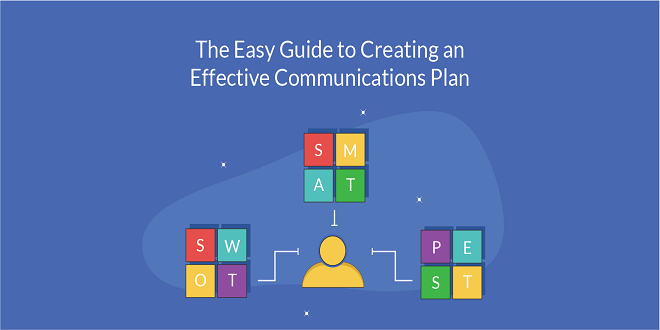Communication objectives in marketing examples

Introduction
In developing a marketing communications plan it is vital to have clearly defined objectives. These objectives are the keystone of the plan as they will set the boundaries and direction for strategic decisions; determine the measurement and control procedures; and, to some extent, suggest budget requirements. Objectives are also necessary to communicate the plan to others in the organization and any external agencies involved in the communications process. In this way the objectives communicate the shared vision of the plan to all those who will have a part to play in its development and implementation.
Fit with higher level objectives
Often one of the constraints for a communications plan is the corporate and/or marketing objectives which have already been set. As can be seen in the World Press Photo Exhibition example the marketing objectives and budget were challenging and needed to be considered alongside the situation analysis in setting realistic communication objectives.
At first the marketing objective and communication objective do not appear to be well aligned, but it can be seen that, by utilizing the situation analysis and undertaking further pre-campaign research, the communications agency isolated the key problem area and focused their efforts on this by moving the campaign to brand based (the millennium) rather than product based (the Dome). This overcame the problems of apathy and media cynicism.
Objective setting tools
Strategic tools for general objective setting can be used and where necessary adapted for communication objectives. For example, objective gap analysis can be used to ensure that communication objectives are realistic and to help identify the changes needed in existing communication strategies to achieve them. The gap analysis technique involves plotting any previous communication achievements on a graph against time and extrapolating these to the future planning period. This then shows what can be achieved if current strategies are maintained.
Communication theory and objective setting
A number of authors have attempted to identify and categorize the key areas of influence of communications. These are often referred to as communication effects and are closely related to the customer decision-making process. An awareness of the terminology and hierarchy of these effects is useful in determining communication objectives.
One of the most often used and oldest categorization of communication was developed by Strong in 1925 in relation to direct sales. The four stages identified are known as AIDA and refer to awareness, interest, desire and action.
Determining and describing target audiences
In order to meet the general communication objectives specific stakeholder groups will need to be identified and targeted. Once this has been done, the final level of objective setting can be undertaken where objectives are developed for each identified target group, as each group may have differing communication preferences.
Their characteristics, preferences and behavior
Once a target group has been selected, a detailed description or profile is needed of their characteristics, communication preferences and their behaviour. Many ticketed events have an ideal opportunity to gather information and research the preferences of target groups through their box office and ticketing systems, although, these data are rarely used to their full potential. For example, the box office is uniquely placed in that it provides the major intimate opportunity to capture information about actual customers, to find out who they are and how they found out about events.
Consumer decision making
Several areas of consumer behaviour and communications theory are useful in determining what information is needed to help develop the right communications for each target audience. A comprehensive model of consumer decision making developed by Engel et al. (1995) is useful for identifying the areas that need to be understood if the audience is going to be communicated with effectively. Central to this model is the decision-making process.
The decision-making process
The decision-making process reflects many of the stages seen earlier in the communication effects models. The buying decision starts with the recognition of a need or problem to be solved and then moves on to information search. Once information has been gathered, either from existing knowledge or external sources, the consumer evaluates the alternatives they have available. Based on this evaluation a choice is made and after buying, using or experiencing the product the consumer evaluates that experience to confirm or adapt their opinions and attitudes. An understanding of these stages is useful for setting communication objectives as each stage can be informed or influenced by marketing communications but requires different communication methods.
Decision types and consumer involvement
The decision-making process described suggests that purchase decisions are made rationally and logically with consumers gathering information on products which will solve their problems and evaluating these alternatives before making a decision. Not all decisions, of course, are made in this way. Often stages are skipped or the purchase is an ‘impulse buy’ requiring little or no rational thought. A useful way to categorize target audiences is through their decision-making behaviour. Certain people, or indeed organizations, may base their decision making on more emotional criteria, or will develop routine-response buying behaviour due to habit, lack of interest or loyalty.
The tattoo culture has experienced a significant rise in popularity over the years, becoming more mainstream and widely accepted. Tattoos have a long and rich history, serving as a form of self-expression and a symbol of cultural significance. From ancient civilizations to modern times, tattoos have held various meanings and purposes.
Organizational decision making
Although, the model described was developed for consumer decision making a similar process is often followed by organizations. The formality of the process will differ between organizational segments and, therefore, it is important to understand their buying behaviour before developing communications. Some organizations will purchase in a very rational manner with systems in place for gathering and evaluating alternative offerings, whereas others may rely more on an individual’s personality, experience and preferences.





